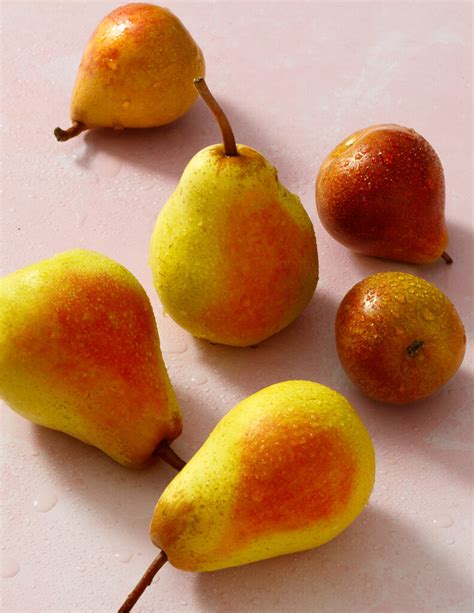Picking the perfect pear can be a daunting task, especially with the numerous varieties available in the market. However, with a few simple tips and tricks, you can become a pear-picking pro and enjoy the sweetness and juiciness of this delicious fruit.
To start, it’s essential to understand that pears are typically picked when they’re mature but still hard. They will continue to ripen after they’re picked, so it’s crucial to choose pears that are free of bruises and have a smooth, unblemished skin. A gentle squeeze can help determine if a pear is ready to be picked. A ripe pear will yield to pressure, but should still feel slightly firm. If the pear is too soft, it may be overripe and not suitable for eating.
One of the most critical factors in picking the perfect pear is the variety. There are numerous types of pears, each with its unique characteristics, textures, and flavors. Some popular varieties include Bartlett, Anjou, and Bosc. Bartlett pears are known for their sweet, buttery flavor and tender texture, making them ideal for eating fresh and canning. Anjou pears are sweet and juicy, with a hint of citrus flavor, while Bosc pears are crisp and sweet, with a nutty flavor.
When selecting pears, it’s also important to consider the color. While some pears may be green, others may have a red or yellow tint. The color of the pear will not necessarily determine its ripeness, but it can indicate the variety and sweetness level. For example, Bartlett pears will typically turn from green to yellow as they ripen, while Anjou pears will remain green even when ripe.
In addition to the variety and color, the stem and leaves of the pear can also provide clues about its ripeness and quality. A pear with a fresh, green stem and leaves is likely to be fresher and of better quality than one with wilted or brown stem and leaves. It’s also essential to inspect the pear for any signs of damage, such as bruises, cuts, or mold. A damaged pear can spoil quickly and may not be suitable for eating.
Pears are a great source of fiber, vitamins, and antioxidants, making them an excellent addition to a healthy diet. Eating a pear a day can help boost your immune system, support healthy digestion, and even aid in weight management.
To further ensure you’re picking the perfect pear, consider the following steps:
- Choose pears that are heavy for their size: A heavy pear is likely to be juicier and have a higher sugar content than a lighter one.
- Check the neck: A ripe pear will have a slight indentation at the stem end, indicating that it’s ready to eat.
- Avoid pears with soft spots: Soft spots can be a sign of overripe or damaged fruit.
- Don’t squeeze too hard: While a gentle squeeze can help determine ripeness, squeezing too hard can bruise the fruit and cause it to spoil more quickly.
- Consider the aroma: Ripe pears will give off a sweet, fruity aroma, while unripe or overripe pears may have little to no scent.
Step-by-Step Guide to Ripening Pears
- Place the pears in a paper bag with an apple or banana to speed up the ripening process.
- Keep the pears away from direct sunlight and heat sources.
- Check the pears daily for ripeness, and remove any that are ripe to prevent overripening.
- Once the pears are ripe, store them in the refrigerator to prolong their freshness.
In conclusion, picking the perfect pear requires a combination of knowledge, observation, and gentle handling. By understanding the different varieties, colors, and characteristics of pears, you can make informed choices and enjoy the sweetness and juiciness of this delicious fruit.
Q: How do I know when a pear is ripe?
+A: A ripe pear will yield to pressure, but should still feel slightly firm. You can also check the neck of the pear for a slight indentation, which indicates ripeness.
Q: Can I ripen pears at home?
+A: Yes, you can ripen pears at home by placing them in a paper bag with an apple or banana. This will help to speed up the ripening process.
Q: How do I store pears to keep them fresh?
+A: Once pears are ripe, you can store them in the refrigerator to prolong their freshness. Keep them away from direct sunlight and heat sources to prevent overripening.
By following these tips and guidelines, you’ll be well on your way to becoming a pear-picking pro and enjoying the many benefits of this delicious and nutritious fruit. Whether you’re a seasoned foodie or just starting to explore the world of fruits, pears are a great choice for anyone looking to add some sweetness and variety to their diet.


